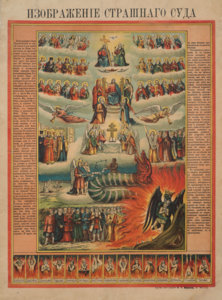 An opening ceremony of the final exhibition of the project titled “Folk Pictures are the View of Motherland” - the winner of the 9th grant competition “Changing Museum in a Changing World” of the Vladimir Potanin Charitable Fund in the nomination “Museum researches” – will be held in the Vologda State Museum-Preserve today, on September 18.
An opening ceremony of the final exhibition of the project titled “Folk Pictures are the View of Motherland” - the winner of the 9th grant competition “Changing Museum in a Changing World” of the Vladimir Potanin Charitable Fund in the nomination “Museum researches” – will be held in the Vologda State Museum-Preserve today, on September 18.
Visitors of the new display will be able to see over 150 works from the collections of eight museums of Vologda and the Vologda region as well as the artists’ studios from Moscow, St. Petersburg and the Khotkovo settlement (Moscow region). The Kirillo-Belozersky museum-reserve has presented 12 engravings from its collection.
According to the organizers, this exhibition will unite folk pictures of the late 18th – early 20th centuries kept in the museum collections with the works of artists of the late 20th - early 21st centuries.
Russian folk pictures – engravings with pictures and texts – were originally black-and-white and were destined for decoration of houses of tsars and noble persons. Later they began mass production of coloured pictures. The first folk pictures were created in the 17th century and very popular till the early 20th century. Their subjects were various: spiritual and religious, historical, fairy, humorous, containing folk wisdom and even thoroughly masked political satire.







